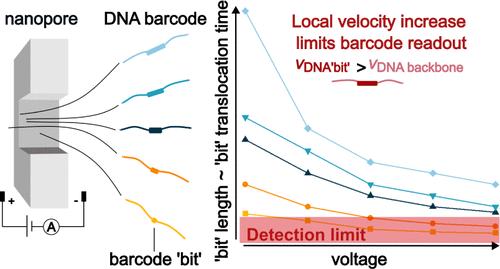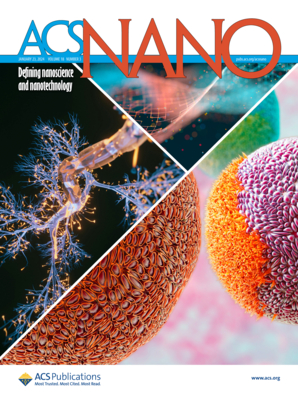Impact of Translocation Dynamics and Bandwidth on the Readout of DNA Structural Barcodes with Membrane-Based Solid-State Nanopores
IF 15.8
1区 材料科学
Q1 CHEMISTRY, MULTIDISCIPLINARY
引用次数: 0
Abstract
Recent advances in nanopore technology have promoted significant progress in single-molecule detection and analysis. In particular, membrane-based solid-state nanopores show promise as highly scalable readout platforms. This study explores the detection performance of this class of nanopores, with a focus on their application in molecular sensing schemes using DNA structural barcodes. The barcode structures, here specifically a series of dumbbell-shaped hairpins, encode information in a dumbbell-bit, which modulates the nanopore ionic current during translocation for readout. Our experiments evaluate the detection capabilities of membrane-based solid-state nanopores with a diameter of ∼15 nm. We investigate the detection success rates of individual dumbbell-bits with lengths ranging from 5 dumbbells (∼35 nm) to 29 dumbbells (∼195 nm) and with varying transmembrane potential. Longer dumbbell-bits exhibit a quasi-constant detection rate, whereas shorter bits show a significant decrease in the detection rate with increasing voltage. The observed dependencies are shown to be due to the increasing translocation velocity with voltage, in combination with the temporal resolution limit of the measurement system. Moreover, we show that a local increase of the effective charge at the dumbbell-bits leads to a proportionally increased local translocation velocity. This local velocity increase further degrades the detection success rate for dumbbell-bits. The findings in this study enhance our understanding of the fundamental limitations and capabilities of nanopore technology in high-throughput biosensing applications and have important implications for the design and optimization of future molecular assays and solid-state nanopore readout platforms.

求助全文
约1分钟内获得全文
求助全文
来源期刊

ACS Nano
工程技术-材料科学:综合
CiteScore
26.00
自引率
4.10%
发文量
1627
审稿时长
1.7 months
期刊介绍:
ACS Nano, published monthly, serves as an international forum for comprehensive articles on nanoscience and nanotechnology research at the intersections of chemistry, biology, materials science, physics, and engineering. The journal fosters communication among scientists in these communities, facilitating collaboration, new research opportunities, and advancements through discoveries. ACS Nano covers synthesis, assembly, characterization, theory, and simulation of nanostructures, nanobiotechnology, nanofabrication, methods and tools for nanoscience and nanotechnology, and self- and directed-assembly. Alongside original research articles, it offers thorough reviews, perspectives on cutting-edge research, and discussions envisioning the future of nanoscience and nanotechnology.
 求助内容:
求助内容: 应助结果提醒方式:
应助结果提醒方式:


